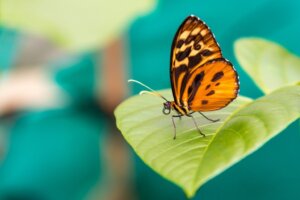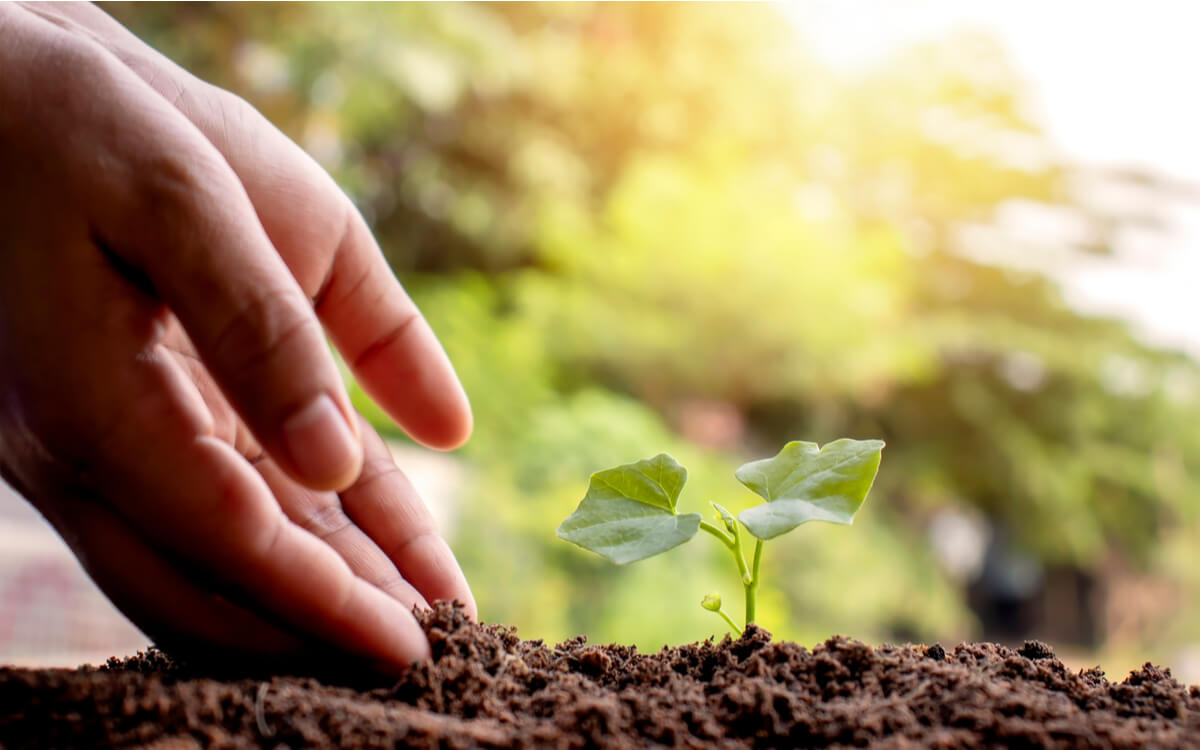5 Differences Between Animals and Plants


Written and verified by the biologist Samuel Sanchez
Living beings make the planet a habitable and beautiful place in equal parts, because without them it would be impossible to eat, breathe, observe landscapes and so many other things that we depend on. Although the term “life” is so difficult to define, there are certain differences between animals and plants that help us catalog them into taxa (orders, families, genera, and more).
Life is everything that happens between birth and death. Living beings are cataloged based on the genetic information they carry in their cells, but also according to the activities and ecology they carry out during their existence. Get to know five important differences between animals and plants with us today!
1. The secret’s in the cells
The term “cell” refers to the minimum functional unit of every living being, as indicated by the amBientech portal. This structure is isolated from the environment by a membrane, contains the organelles necessary to maintain itself (to a certain extent) and has the basic genetic information to replicate over time.
One of the most important differences between animals and plants lies in the composition of their cells. We see their biggest disparities in the following list:
- Animal cells have a plasma membrane that covers their internal structure (cytosol). In addition to the plasma membrane, plant cells have a thick, geometrically shaped cell wall.
- Plant cells have chloroplasts, the organelles responsible for photosynthesis. Animals don’t have them.
- Both animal and plant cells have vacuoles, organelles that help retain the waste products of cellular metabolism. However, the vacuoles of plants are much larger.

2. Animals aren’t capable of “making” their own food.
These terms may sound familiar to you: animals are characterized by being heterotrophs, while plants, algae and certain microorganisms are autotrophs. We’ll define both terms briefly:
- Heterotroph: This is any living being incapable of making its own organic matter from inorganic compounds present in the environment. Simply put, it needs to eat organic matter to maintain itself.
- Autotroph: The living being produces the organic matter it needs to maintain itself from inorganic compounds in the environment. Photosynthesis and chemosynthesis are examples within this category.
This extensive point can be summarized in the following sentence: animals are heterotrophs and have to feed on other living beings to eat (other animals or plants), while plants photosynthesize and are capable of converting the energy from the sun and the inorganic matter into nutritive compounds. Each strategy has its pros and cons.
3. All animals have at least one mobile phase
Another difference between animals and plants lies in their ability to move themselves in their environment. Plants have specific tropisms (growing towards the light source, directing their roots to water, or contracting their leaves with friction), but they aren’t able to move from one place to another. They lack locomotor apparatus, so they always remain in a fixed position.
On the other hand, all animals move at least at some point in their life. Even sponges and corals (found on the seabed) have phases when they’re able to move from one side to the other in the water. With corals (cnidarians), the planula larva swim freely until they settle in the right place.
4. Numbers and diversity
To date, almost 2 million animal species have been discovered, of which more than half are insects. However, professional articles from the BBC estimate that the real figure is much higher, as more than 8.7 million types of animals could live in our environment. At the rate we’re going, it’ll take more than 1000 years to discover them all.
The number of plants is about 391,000. However, this estimate only includes vascular plants and leaves out many taxa. To be sure, on both fronts there’s a great deal of knowledge to be deciphered.
5. How does each contribute to the Earth?
Scientific studies of great interest show us the last of our list of differences between animals and plants. The planet’s biomass in the form of carbon is estimated at 550 gigatons (550 billion tonnes) and 80% of it comes from plants. 450 gigatons are found in forests, grasslands, algae ecosystems, and whatever plant-filled environment comes to mind.
On the other hand, animals only contribute a paltry 2 gigatons to the global count of organic matter. The case of humans is even more interesting, because despite being more than 7 billion people, we only account for 0.06 gigatons of carbon. Undoubtedly, the responsibility of the functioning of the environment falls on the plant matter.

What do you think of the main differences between animals and plants? As you can see, as much as they differ in physical appearance, both groups of living beings show disparities far beyond their physiology. However, we emphasize that each and every species on Earth is essential for the functioning of ecosystems, regardless of their taxon.
Living beings make the planet a habitable and beautiful place in equal parts, because without them it would be impossible to eat, breathe, observe landscapes and so many other things that we depend on. Although the term “life” is so difficult to define, there are certain differences between animals and plants that help us catalog them into taxa (orders, families, genera, and more).
Life is everything that happens between birth and death. Living beings are cataloged based on the genetic information they carry in their cells, but also according to the activities and ecology they carry out during their existence. Get to know five important differences between animals and plants with us today!
1. The secret’s in the cells
The term “cell” refers to the minimum functional unit of every living being, as indicated by the amBientech portal. This structure is isolated from the environment by a membrane, contains the organelles necessary to maintain itself (to a certain extent) and has the basic genetic information to replicate over time.
One of the most important differences between animals and plants lies in the composition of their cells. We see their biggest disparities in the following list:
- Animal cells have a plasma membrane that covers their internal structure (cytosol). In addition to the plasma membrane, plant cells have a thick, geometrically shaped cell wall.
- Plant cells have chloroplasts, the organelles responsible for photosynthesis. Animals don’t have them.
- Both animal and plant cells have vacuoles, organelles that help retain the waste products of cellular metabolism. However, the vacuoles of plants are much larger.

2. Animals aren’t capable of “making” their own food.
These terms may sound familiar to you: animals are characterized by being heterotrophs, while plants, algae and certain microorganisms are autotrophs. We’ll define both terms briefly:
- Heterotroph: This is any living being incapable of making its own organic matter from inorganic compounds present in the environment. Simply put, it needs to eat organic matter to maintain itself.
- Autotroph: The living being produces the organic matter it needs to maintain itself from inorganic compounds in the environment. Photosynthesis and chemosynthesis are examples within this category.
This extensive point can be summarized in the following sentence: animals are heterotrophs and have to feed on other living beings to eat (other animals or plants), while plants photosynthesize and are capable of converting the energy from the sun and the inorganic matter into nutritive compounds. Each strategy has its pros and cons.
3. All animals have at least one mobile phase
Another difference between animals and plants lies in their ability to move themselves in their environment. Plants have specific tropisms (growing towards the light source, directing their roots to water, or contracting their leaves with friction), but they aren’t able to move from one place to another. They lack locomotor apparatus, so they always remain in a fixed position.
On the other hand, all animals move at least at some point in their life. Even sponges and corals (found on the seabed) have phases when they’re able to move from one side to the other in the water. With corals (cnidarians), the planula larva swim freely until they settle in the right place.
4. Numbers and diversity
To date, almost 2 million animal species have been discovered, of which more than half are insects. However, professional articles from the BBC estimate that the real figure is much higher, as more than 8.7 million types of animals could live in our environment. At the rate we’re going, it’ll take more than 1000 years to discover them all.
The number of plants is about 391,000. However, this estimate only includes vascular plants and leaves out many taxa. To be sure, on both fronts there’s a great deal of knowledge to be deciphered.
5. How does each contribute to the Earth?
Scientific studies of great interest show us the last of our list of differences between animals and plants. The planet’s biomass in the form of carbon is estimated at 550 gigatons (550 billion tonnes) and 80% of it comes from plants. 450 gigatons are found in forests, grasslands, algae ecosystems, and whatever plant-filled environment comes to mind.
On the other hand, animals only contribute a paltry 2 gigatons to the global count of organic matter. The case of humans is even more interesting, because despite being more than 7 billion people, we only account for 0.06 gigatons of carbon. Undoubtedly, the responsibility of the functioning of the environment falls on the plant matter.

What do you think of the main differences between animals and plants? As you can see, as much as they differ in physical appearance, both groups of living beings show disparities far beyond their physiology. However, we emphasize that each and every species on Earth is essential for the functioning of ecosystems, regardless of their taxon.
All cited sources were thoroughly reviewed by our team to ensure their quality, reliability, currency, and validity. The bibliography of this article was considered reliable and of academic or scientific accuracy.
- ¿Qué es la célula? Ambientech. Recogido a 9 de septiembre en https://ambientech.org/celula
- Species count put at 8,7 million, BBC. Recogido a 9 de agosto en https://www.bbc.com/news/science-environment-14616161#:~:text=The%20natural%20world%20contains%20about,take%20more%20than%201%2C000%20years.
- Bar-On, Y. M., Phillips, R., & Milo, R. (2018). The biomass distribution on Earth. Proceedings of the National Academy of Sciences, 115(25), 6506-6511.
This text is provided for informational purposes only and does not replace consultation with a professional. If in doubt, consult your specialist.








